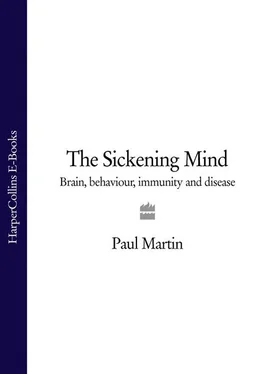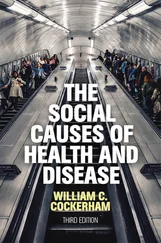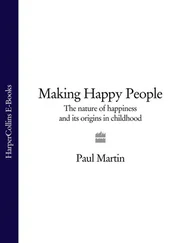The melodrama of Anna Karenin’s suicide and Vronsky’s death wish are positively restrained in comparison with the high-camp posturings of Werther, the suicidal hero of Goethe’s The Sorrows of Young Werther . This eighteenth-century piece of unfettered Teutonic sentimentality tells the tragic tale of an unbalanced youth who tops himself after a bad dose of unrequited love.
The story is a simple but eternal one. Werther loves Lotte. Oh, how he loves her! But, alas, he cannot have her. Lotte is already promised to the worthy Albert and soon marries him, leaving Werther to wallow in emotional excess. He sheds a thousand tears one moment and ‘overflows with rapture’ the next, and each step on the way is recounted in copious letters to his long-suffering chum Wilhelm. So it comes as no surprise that, denied his one true love, Werther decides to end it all. Characteristically, his suicidal decision is reached only after much beating of chest, gnashing of teeth, shedding of tears and general languishing in melancholy, during which time an unkind reader might be forgiven for urging the lad to get on with it. Even when Werther finally does get round to pulling the trigger he takes several hours to die.
Incidentally, the tragic tale of young Werther had a fairly profound effect on the health of a number of readers. So resonant was Goethe’s writing with the romantic spirit of the times that the book triggered an epidemic of copy-cat suicides and was consequently banned in many places. 2
All the leading causes of death in industrialized nations – including heart disease, cancer, accidental injury and AIDS – depend to some extent on how we behave. Smoking, eating habits, alcohol consumption, physical exercise, sleep patterns, sexual behaviour and choosing to wear a seatbelt, to name but a few, have ramifications for our health and wellbeing.
In industrialized societies, for example, accidental injuries and violence now account for at least half of all deaths among young men: a fact that is not wholly unrelated to the behavioural characteristics of young men. In extreme cases people who are very depressed or upset commit suicide or deliberately behave in a way which invites serious injury or death. Severe depression can lead to self-destructive behaviour. Besides making us act in positively unhealthy ways, psychological factors like anxiety, stress or depression can also inhibit us from engaging in activities that are beneficial to health, such as physical activity or social relationships with others.
In certain cases, such as crashing your car or committing suicide, the causal connection between behaviour and the subsequent damage to health is pretty obvious and requires no intimate knowledge of medical science to understand. Thanks to education and constant repetition in the media, less obvious connections between behaviour and health are also now widely recognized. The public accept that there are links between smoking and all manner of fatal diseases; between slothfulness and heart disease; between alcohol abuse and cirrhosis; and between unprotected sex and AIDS.
A stark illustration of how behaviour affects health is provided by AIDS. There are enormous geographical variations in the incidence of HIV infection and AIDS. For example, the incidence of AIDS in Honduras is fourteen times higher than in neighbouring Guatemala. Even within a single country or a single city there are massive variations in rates of infection between different social groups.
Since the HIV retrovirus was discovered to be the causal agent for AIDS in 1983 it has become clear that these large variations result primarily from differences in people’s behaviour – especially their sexual behaviour, which remains the route by which the virus is transmitted in the vast majority of HIV infections. It is generally accepted that a practical vaccine or cure for HIV/AIDS is at least a decade away. 3 In the meantime, the only effective means available for limiting its spread is to change the way we behave.
There are plenty of commonplace behaviour patterns that kill people gradually but in huge numbers. Smoking is the prime example. As long ago as 1604 King James I, in his treatise A Counterblast to Tobacco , did not exactly pull his punches when he described the new-fangled habit of smoking as:
A custom loathsome to the eye, hateful to the nose, harmful to the brain, dangerous to the lungs, and in the black, stinking fume thereof, nearest resembling the horrible Stygian smoke of the pit that is bottomless.
Smoking is the riskiest thing that most people will ever do in their lives. At present, smoking-related diseases account for 15–20 per cent of all deaths and result in over 100,000 premature deaths every year in Britain alone. Smoking greatly increases the risk of lung cancer, now the commonest fatal cancer in Britain. Smokers are ten times more likely to die from lung cancer than non-smokers and around 90 per cent of lung cancers are attributable to smoking.
Smoking also increases the risks of various other fatal or debilitating diseases including coronary heart disease (the biggest cause of death in most industrialized countries), chronic bronchitis, emphysema, and cancers of the oesophagus, bladder and pancreas. A quarter of all deaths from coronary heart disease are smoking-related. As if that were not enough, smoking causes birth complications and doubles the risk of a pregnant woman miscarrying.
Think about these statistics from the British Medical Association. The average risk that you will die from leukaemia within the next year is about 1 in 12,500. The average risk that you will die in a vehicle accident is 1 in 8,000. If you are, say, forty years old, your risk of dying from natural causes of any sort during the next twelve months is 1 in 850. However, if you smoke ten cigarettes a day your odds of dying within the year are 1 in 200. Or look at it another way: take a random sample of a thousand young men who smoke; on the basis of actuarial data it can confidently be predicted that one of these young men will eventually be murdered, six will be killed on the roads and two hundred and fifty will die prematurely from the effects of smoking.
Smoking is clearly bound up with what goes on in people’s minds. The reasons why individuals start smoking and why they then find it impossible to quit are neither simple nor well understood. Psychological studies of smokers have, however, confirmed the truth of several common assumptions.
It is indeed true that people who are depressed or stressed are more likely to smoke (and, consequently, more likely to die from lung cancer). Smokers really do experience a stronger desire to smoke at times of heightened anxiety. To add to their problems, psychological stress is associated with a higher failure rate among smokers trying to kick the habit. One long-term study of smokers found that individuals who had been depressed as much as nine years earlier were 40 per cent less likely to be successful in their attempts to give up smoking.
It gets worse. The psychological and emotional factors that make people inclined to smoke induce them to do other unhealthy things as well. Research has shown that moderate-to-heavy smokers are, on average, significantly less conscious of health-related issues, hold less favourable attitudes towards healthy behaviour and have a generally less healthy lifestyle in comparison with non-smokers or light smokers. (Conversely, wholesome behaviour patterns also come in clusters; researchers at Harvard University Medical School found that individuals who drank only decaffeinated coffee also tended to eat lots of vegetables, take regular exercise and wear their seatbelts.)
As well as prompting people to smoke, stress is also linked to increased alcohol consumption – at least, in certain types of individual. The health implications of excessive drinking can be profound. Approximately 20 per cent of all male in-patients in British hospitals have alcohol-related problems. Alcohol can rot people’s livers and kill them in drunken accidents (though alcohol is not the only recreational drug capable of damaging health: there is reasonably good evidence, for example, that marijuana impairs the immune system, with potentially adverse consequences for the health of long-term users.)
Читать дальше












